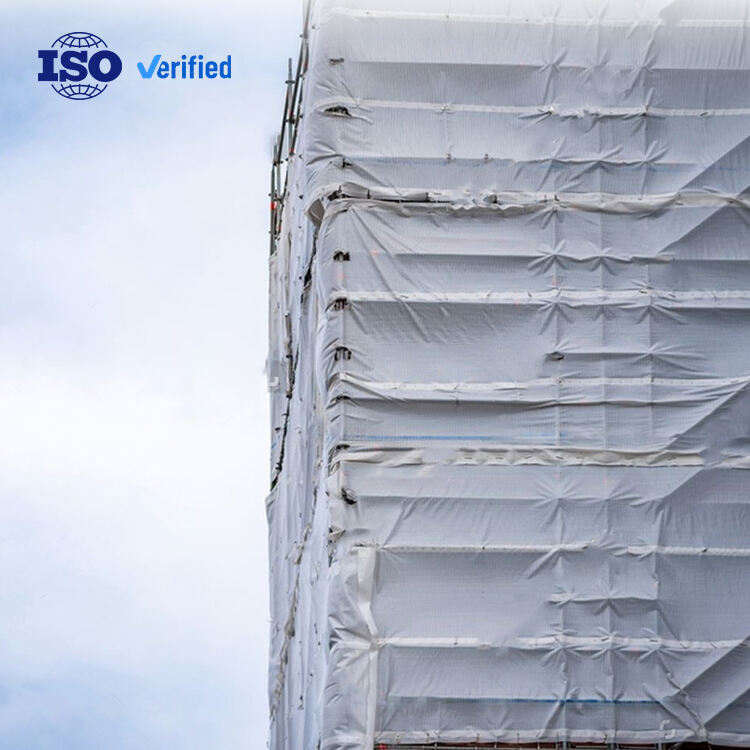Understanding Industrial Shrink Film Specifications for Optimal Packaging Results
When it comes to packaging operations, selecting the correct shrink film roll sizes can make the difference between efficient production and costly waste. Whether you're running a small packaging line or managing a large distribution center, understanding the key dimensions and specifications of shrink film is crucial for your operation's success. Let's explore the essential factors that determine the right shrink film selection and how they impact your packaging results.
Critical Dimensions of Shrink Film Rolls
Width Considerations for Perfect Product Coverage
The width of your shrink film roll is arguably the most important dimension to consider. A properly sized width ensures complete product coverage while minimizing excess material waste. When selecting the appropriate width, you'll need to account for both the product dimensions and the shrinkage ratio of the film. Generally, the film width should be approximately 20% larger than your product's width plus height to allow for proper shrinkage and sealing.
For example, if you're packaging a box that measures 12 inches wide by 8 inches high, you'll want to calculate: (12 + 8) x 1.2 = 24 inches. This means a 24-inch wide shrink film roll would be ideal for your application. Remember that having too narrow a width can lead to incomplete coverage, while excessive width results in unnecessary material costs and potential sealing issues.
Length Specifications and Roll Management
Roll length directly affects production efficiency and changeover frequency. Standard shrink film rolls typically range from 2,000 to 6,000 feet in length, though custom lengths are available for specific applications. Longer rolls mean fewer changeovers, which translates to increased uptime and productivity. However, you'll need to balance this against storage space requirements and the film's shelf life.
Consider your production volume when selecting roll length. High-volume operations benefit from longer rolls to minimize downtime, while smaller operations might prefer shorter rolls to maintain fresh inventory and manage storage space more effectively. It's also important to note that some machines have maximum roll diameter limitations, which could restrict your length options.
Understanding Film Gauge and Its Impact
Gauge Selection for Product Protection
Film gauge, measured in microns or millimeters, determines the thickness and strength of your shrink film. Common gauges range from 45 to 150 microns, with selection depending on product weight, shape, and protection requirements. Heavier or sharp-edged products typically require thicker gauges to prevent film puncture and ensure adequate protection during transit.
It's important to note that thicker isn't always better. Using a gauge that's too heavy for your application wastes materials and energy, as thicker films require more heat to achieve proper shrinkage. Conversely, too thin a gauge can lead to tears and compromised package integrity. Finding the sweet spot for your specific application is crucial for both performance and cost-effectiveness.
Environmental and Cost Considerations
The film gauge you select has direct implications for both environmental impact and operational costs. Thinner gauges generally require less material and energy to produce, making them more environmentally friendly and cost-effective. However, this must be balanced against the need for adequate product protection and machine performance requirements.
Modern shrink films often incorporate advanced polymers that allow for downgauging without sacrificing strength. This technology enables the use of thinner films while maintaining or even improving package integrity, leading to significant material savings and reduced environmental impact.

Machine Compatibility and Performance Optimization
Equipment Specifications and Limitations
Different shrink wrap machines have specific requirements for film roll sizes and configurations. Understanding your equipment's capabilities and limitations is essential for selecting appropriate shrink film roll sizes. Key considerations include maximum roll diameter, core size requirements, and film tension control capabilities.
Most modern shrink wrap machines can accommodate a range of roll sizes, but it's crucial to consult your equipment manufacturer's specifications before making any changes to your film dimensions. This ensures optimal machine performance and prevents potential damage from incompatible film rolls.
Operational Efficiency and Setup Requirements
The relationship between film roll sizes and machine setup directly impacts operational efficiency. Proper film sizing reduces the need for frequent adjustments and minimizes the risk of packaging defects. Consider factors such as film alignment, tension control, and sealing temperature when selecting roll dimensions.
Training operators on proper film loading and tension adjustment procedures for different roll sizes is essential for maintaining consistent package quality. Regular maintenance and calibration of film handling components ensure optimal performance regardless of the roll specifications being used.
Frequently Asked Questions
How do I calculate the correct shrink film width for my product?
To calculate the appropriate shrink film width, measure your product's width plus height and multiply by 1.2 to account for proper shrinkage and sealing overlap. This provides the minimum width needed for complete coverage while allowing for efficient sealing and shrinking.
What factors should I consider when choosing film gauge?
When selecting film gauge, consider your product's weight, shape, sharp edges, and protection requirements. Also factor in your machine's capabilities, production speed, and energy consumption. Balance these against cost and environmental considerations to find the optimal gauge for your application.
How does roll length affect packaging efficiency?
Roll length impacts production efficiency through changeover frequency and downtime. Longer rolls reduce the number of changeovers required but may require more storage space and affect inventory management. Consider your production volume, storage capacity, and machine specifications when selecting roll length.
What are the signs that I'm using the wrong shrink film roll size?
Common indicators include incomplete product coverage, excessive film waste, frequent film breaks or tears, poor sealing quality, and inconsistent shrinkage. You may also notice increased energy consumption or reduced production speeds if the film dimensions aren't properly matched to your equipment and application.

